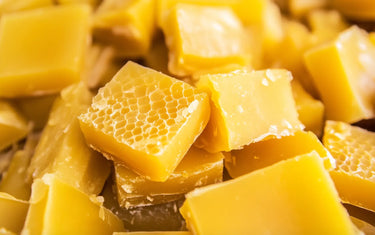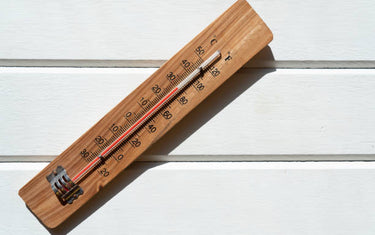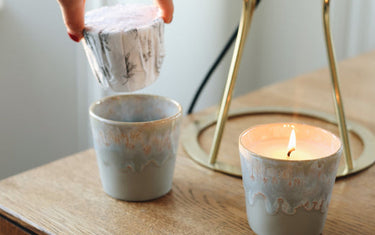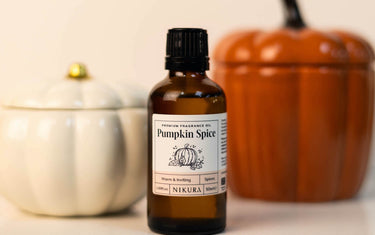5 min read / 12 October 2025 / Yasmin Sharp
How to Read and Understand IFRA Reports
Learn how to interpret IFRA Conformity Certificates to ensure safe usage levels of essential and fragrance oils and to keep your products safe and compliant.
Share this post

If you run a business that uses essential oils or fragrance oils for perfume making, candle making or soap making, you’ve probably come across IFRA Conformity Certificates.
From usage levels and category applications to EU regulations, you’ll need to know how it relates to the oils you intend to use for your products. However, there is a lot of information to decipher, which can make the certificate hard to decipher.
In this article we explain how to read IFRA certificates and what each section on the report means, so you can keep your products safe and your customers happy.
What is an IFRA certificate?
An IFRA (International Fragrance Association) certificate is created by fragrance manufacturers to confirm the safety standards associated with using a particular essential or fragrance oil.
Because every oil has its own unique composition this means that they should be supplied with their own certificate. The usage levels of the oil are divided into specific categories (such as personal care, candles etc.) so creators know how much to include in their recipes.

Why do I need to know how to read an IFRA certificate?
Being able to understand the information on an IFRA report will have a direct influence over how you use a particular essential oil or fragrance oil.
The report explains the health and safety guidelines the oil adheres to so you can ensure that any products that contain it are safe for use. This will not only help to keep customers safe but also give added protection to your business.
Who is responsible for making IFRA certificates?
Although the information detailed on an IFRA certificate refers to the guidelines set by the International Fragrance Association, the body itself is not responsible for issuing them.
Instead, they must be issued by a fragrance mixture or ingredient manufacturer, which means that anyone distributing essential oils or fragrance oils will need to ensure the information provided is correct.

How do you read an IFRA certificate?
We explain how each section of an IFRA report should be read so you have a better understanding of how to interpret the information.
Issue Date & Version
At the top of the page, you’ll see an issue date, which refers to when the IFRA certificate was issued to the supplier. Below that you will see a version number that states which standard the information relates to.
Version 1 is the original IFRA conformity certificate and any version numbers after 1 means that the IFRA certificate has been updated since the first one published. The date when the version was raised by the manufacturer is shown in brackets beside the version number. You should always check the version you are working to as each update includes important changes.
Certifying Party / Certificate Delivered To
Here you will find the name and address of the oil supplier. This is useful if you need more information about how the product follows the latest IFRA standards.
Scope of the Certificate
This section states the commercial name of the oil being referred to on the certificate.
Compulsory Information
An introductory paragraph is inserted here to confirm that the oil reference complies with IFRA standards up to and including the 51st Amendment to the IFRA Code of Practice (June 2023) and the European Cosmetic Regulation (EC) 1223/2009, provided it is used at a recommended maximum level for the categories listed in the table below.
IFRA Categories
The categories listed in the table on the certificate refer to how the oils are used in specific consumer products. Some of these categories are then further split into more specific items that might contain a lower maximum level of use. The full glossary and explanation for each category is on the last page of the IFRA. Here is our Lavender Essential Oil IFRA for you to have a look at in more detail.
| IFRA Category | Product Type |
|---|---|
| Category 1 | Lip balms, lipsticks |
| Category 2 | Deodorants, antiperspirants, body sprays |
| Category 3 | Face/body products; face wipes, eye make up, face masks, body/face paint, make up remover |
| Category 4 | Perfumes, cologne, aftershave |
| Category 5 | Leave on creams; body lotions and creams, moisturisers, hand cream |
| Category 6 | Oral products; mouthwash, toothpaste, breath sprays |
| Category 7 | Rinse off and leave in products for the hair; hair relaxers, hair dyes, hair spray, hair stylers |
| Category 8 | Intimate wipes, feminine hygiene |
| Category 9 | Rinse off products with hand exposure; bar soap, shampoo, conditioner, body wash, face cleanser |
| Category 10 | Household products (& spray products); laundry pre-treatments, laundry detergents, fabric softeners, hard surface cleaners, air fresheners |
| Category 11 | Products with intended skin contact; feminine hygeine products, toilet paper, scented gloves, wheat bags, napkins, paper towels |
| Category 12 | Not intended for contact with skin; candles, incense, carpet powder, insecticides, paints |
Maximum Level of Use (%)
This details the maximum concentration of oil that can be used for each product category, which will be displayed as a percentage.
These are important for health and safety reasons, as it reduces the risk of the consumer experiencing an adverse reaction to a product that contains the oil.
Note though, that the maximum level is for safety purposes, and it isn't a guidline on how much oil to include in any recipe.
Not Approved
If the term ‘not approved’ is used in the maximum level of use section of the table, this means the oil has not been tested in that particular product category, or is not suitable for use in that category.
As a result, it should not be used for any product that falls into that category.
Not Limited
You may also see the term ‘not limited used in the maximum level of use section.
This means that there is no percentage limitation for use of the oil. However, you should still only use the recommended amount for the product in that category.
EU Cosmetic Information
The certificate features a table detailing the usage levels for each product type as they confirm with EU standards. If you are selling – or intend to sell – products into the EU, then you should pay close attention to this information.
Whether you’re candle making, perfume making or soap making, use the lower percentage mentioned in the table. This makes it easier to conform to both UK and EU standards and avoids any unnecessary confusion.
If you are planning on selling your products in another region, the percentages may differ, and you should check to what conforms in your specified region.

Final thoughts
Once you have a better understanding of how to read an IFRA Conformity Certificate it becomes much easier to ensure your products meet current safety guidelines.
Provided you stay within the recommended levels, your business will have more protection too, which allows you to focus on what you do best.
Updates and alterations are published from time-to-time by the IFRA, so keep an eye out for these to make sure you are always working to the latest version.









